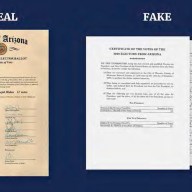OTTAWA – Some sealers may be abusing special permits that let them hunt seals for personal use by cashing in on the animals instead, newly released documents show.
Commercial sealers complained to the federal Fisheries Department last year about unscrupulous hunters selling animals meant for personal consumption.
A May 2008 briefing note for then-fisheries minister Loyola Hearn, obtained by The Canadian Press under the Access to Information Act, outlined the commercial sealers’ concerns.
“There has been concern expressed by sealers, during 2008 regional consultations, that some personal use licence holders have used this privilege to engage in commercial sealing,” the document says.
Since 1995, residents of Newfoundland and Labrador and Quebec have been allowed to apply for personal-use licences that let them hunt up to six seals for their own use.
Personal-use licence holders can hunt seals for food, fuel, shelter, fur and other products – as long as the animals aren’t sold commercially.
The government has issued about 1,500 personal-use licences. Of those, about 1,400 licence holders have paid the yearly $5 fee to renew their permits, the Fisheries Department says.
But no new personal-use licences have been issued since 2004 when Ottawa put a freeze on new permits.
“In the absence of a training policy or requirement for new entrants, and at the request of the sealing industry, a licence freeze was put in place in 2004 to allow time for the industry to pursue professionalization,” the briefing note says.
Aboriginals and anyone living in coastal areas north of 53 degrees latitude can still hunt seals for subsistence purposes without a licence.
On top of issuing commercial and personal licences, the federal government sets yearly caps on sealing.
For the last two years, Ottawa has allocated 2,000 seals for personal use. The Fisheries Department says hunters took 40 harp seals this year for personal use compared with 1,770 last year.
“There is presently no room for increasing the personal-use licence under the current allocation key,” the briefing note says.
The harp seal population in Canada is estimated at 5.5 million.
Frank Pinhorn of the Canadian Sealers Association acknowledged personal-use licence holders sometimes sell their seals. But he added the personal quotas are so low – and never come close to being met – that doing so isn’t a problem.
“The number taken is so small it’s not even funny,” he said from St. John’s, N.L.
“So you got a quota of 2,000 and the most we ever catch might be 150 or 200. I mean, what does that mean in the overall scheme of things?
“It doesn’t mean anything.”
The documents don’t say how many sealers with personal licences are selling the animals commercially.
The Fisheries Department says it doesn’t have proof sealers are profiting from personal permits.
“While some sealers may have expressed concern that personal use licences may have been used for commercial purposes, we have not found evidence of any such incidents to date,” spokesman Alain Belle-Isle said in an email.
“This anecdotal information was only included in the briefing note for the purposes of providing general context to the question of whether to lift the freeze.”
Anyone caught using a personal permit for profit faces fines and could have their fishing privileges revoked, Belle-Isle added.
The government has granted many more commercial licences than personal permits. A total of about 14,000 commercial permits have been issued.
This year, about 70,000 harp seals were taken out of Newfoundland and Labrador’s commercial, non-aboriginal quota of 273,000 animals. That’s down from almost 218,000 in 2008 and 225,000 in 2007.
A sagging economy, plummeting pelt prices and the prospect of a European ban on seal products were blamed for the lower number of seals killed in this year’s hunt.
Pelt prices have plunged to $14 from a high of over $100 several years ago.
Prices may fall further now that the European Union has voted to ban imports of seal products. The EU made up 32 per cent of Canada’s seal export market.
The Conservative government says it will appeal the EU’s ban at the World Trade Organization.
Sealing was worth more than $55 million to the economy of Newfoundland and Labrador in 2006, and another $1 million to aboriginal populations in Nunavut.
















